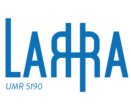|
E5 Event
|
crm:P12 occurred in the presence of (was present at)
|
CC13 Design Concept (is a
E77)
|
CIDOC CRM version 6.2 |
|
E7 Activity
|
crm:P15 was influenced by (influenced)
|
CC13 Design Concept (is a
E1)
|
CIDOC CRM version 6.2 |
|
E7 Activity
|
crm:P16 used specific object (was used for)
|
CC13 Design Concept (is a
E70)
|
CIDOC CRM version 6.2 |
|
E7 Activity
|
crm:P17 was motivated by (motivated)
|
CC13 Design Concept (is a
E1)
|
CIDOC CRM version 6.2 |
|
E7 Activity
|
crm:P19 was intended use of (was made for)
|
CC13 Design Concept (is a
E71)
|
CIDOC CRM version 6.2 |
|
E13 Attribute Assignment
|
crm:P140 assigned attribute to (was attributed by)
|
CC13 Design Concept (is a
E1)
|
CIDOC CRM version 6.2 |
|
E13 Attribute Assignment
|
crm:P141 assigned (was assigned by)
|
CC13 Design Concept (is a
E1)
|
CIDOC CRM version 6.2 |
|
E16 Measurement
|
crm:P39 measured (was measured by)
|
CC13 Design Concept (is a
E1)
|
CIDOC CRM version 6.2 |
|
E17 Type Assignment
|
crm:P41 classified (was classified by)
|
CC13 Design Concept (is a
E1)
|
CIDOC CRM version 6.2 |
|
E24 Physical Man-Made Thing
|
crm:P62 depicts (is depicted by)
|
CC13 Design Concept (is a
E1)
|
CIDOC CRM version 6.2 |
|
E31 Document
|
crm:P70 documents (is documented in)
|
CC13 Design Concept (is a
E1)
|
CIDOC CRM version 6.2 |
|
E32 Authority Document
|
crm:P71 lists (is listed in)
|
CC13 Design Concept (is a
E1)
|
CIDOC CRM version 6.2 |
|
E36 Visual Item
|
crm:P138 represents (has representation)
|
CC13 Design Concept (is a
E1)
|
CIDOC CRM version 6.2 |
|
E63 Beginning of Existence
|
crm:P92 brought into existence (was brought into existence by)
|
CC13 Design Concept (is a
E77)
|
CIDOC CRM version 6.2 |
|
E64 End of Existence
|
crm:P93 took out of existence (was taken out of existence by)
|
CC13 Design Concept (is a
E77)
|
CIDOC CRM version 6.2 |
|
E65 Creation
|
crm:P94 has created (was created by)
|
CC13 Design Concept (is a
E28)
|
CIDOC CRM version 6.2 |
|
E70 Thing
|
crm:P130 shows features of (features are also found on)
|
CC13 Design Concept (is a
E70)
|
CIDOC CRM version 6.2 |
|
E81 Transformation
|
crm:P123 resulted in (resulted from)
|
CC13 Design Concept (is a
E77)
|
CIDOC CRM version 6.2 |
|
E81 Transformation
|
crm:P124 transformed (was transformed by)
|
CC13 Design Concept (is a
E77)
|
CIDOC CRM version 6.2 |
|
E83 Type Creation
|
crm:P136 was based on (supported type creation)
|
CC13 Design Concept (is a
E1)
|
CIDOC CRM version 6.2 |
|
E89 Propositional Object
|
crm:P129 is about (is subject of)
|
CC13 Design Concept (is a
E1)
|
CIDOC CRM version 6.2 |
|
E89 Propositional Object
|
crm:P148 has component (is component of)
|
CC13 Design Concept (is a
E89)
|
CIDOC CRM version 6.2 |
|
E89 Propositional Object
|
crm:P67 refers to (is referred to by)
|
CC13 Design Concept (is a
E1)
|
CIDOC CRM version 6.2 |
|
F1 Work
|
frbroo:R1 is logical successor of (has successor)
|
CC13 Design Concept (is a
F1)
|
FRBRoo version 2.4 |
|
F1 Work
|
frbroo:R2 is derivative of (has derivative)
|
CC13 Design Concept (is a
F1)
|
FRBRoo version 2.4 |
|
F15 Complex Work
|
frbroo:R10 has member (is member of)
|
CC13 Design Concept (is a
F1)
|
FRBRoo version 2.4 |
|
F27 Work Conception
|
frbroo:R16 initiated (was initiated by)
|
CC13 Design Concept (is a
F1)
|
FRBRoo version 2.4 |
|
F28 Expression Creation
|
frbroo:R19 created a realisation of (was realised through)
|
CC13 Design Concept (is a
F1)
|
FRBRoo version 2.4 |
|
F31 Performance
|
frbroo:R66 included performed version of (had a performed version through)
|
CC13 Design Concept (is a
E89)
|
FRBRoo version 2.4 |
|
F35 Nomen Use Statement
|
frbroo:R38 refers to thema (is thema of)
|
CC13 Design Concept (is a
E1)
|
FRBRoo version 2.4 |
|
F40 Identifier Assignment
|
frbroo:R45 assigned to (was assigned by)
|
CC13 Design Concept (is a
E1)
|
FRBRoo version 2.4 |
|
F42 Representative Expression Assignment
|
frbroo:R50 assigned to (was assigned by)
|
CC13 Design Concept (is a
F15)
|
FRBRoo version 2.4 |
|
F51 Pursuit
|
frbroo:R59 had typical subject (was typical subject of)
|
CC13 Design Concept (is a
E1)
|
FRBRoo version 2.4 |
|
F52 Name Use Activity
|
frbroo:R63 named (was named by)
|
CC13 Design Concept (is a
E1)
|
FRBRoo version 2.4 |
|
S4 Observation
|
crmsci:O16 observed value (value was observed by)
|
CC13 Design Concept (is a
E1)
|
CRMsci version 1.2.3 |
|
S4 Observation
|
crmsci:O8 observed (was observed by)
|
CC13 Design Concept (is a
S15)
|
CRMsci version 1.2.3 |
|
S6 Data Evaluation
|
crmsci:O11 described (was described by)
|
CC13 Design Concept (is a
S15)
|
CRMsci version 1.2.3 |
|
S21 Measurement
|
crmsci:O24 measured (was measured by)
|
CC13 Design Concept (is a
S15)
|
CRMsci version 1.2.3 |
|
actE4 Event Template
|
crmact:actP25 specifies situation (is specified situation of)
|
CC13 Design Concept (is a
E1)
|
CRM Activity Plans |




Comments
No comment found.